Wiring
At the time we speak, we say that the voice could reach the ear associates that we are speaking, it takes a trasnmisi media, in this case air. Each computer also requires a network transmission medium. Transmission medium there are many computer networks, can use the media cable, radio waves / wireless, infrared, bluetooth, or the current popular media uses light (fiber optic). Most of the transmission medium used today are the type of cable. Each type of cable typically have different capabilities and specifications, therefore, made the introduction of cable types.
Twisted Pair Cables
Twisted-pair cable is a type of cable used for telephone communications and most modern Ethernet networks. A pair of wires forming a path to transmit data. The pair made kebel entwined to provide protection against "crosstalk" or interference generated by the pair of adjacent wires. When an electric current flows through a wire, will create small circular magnetic field around the wire.
When two wires in an electrical circuit are placed close together, and
their magnetic fields are opposite of each other, thus the two magnetic
fields will cancel out each other. The cable pair will also eliminate any magnetic field from the outside wires.
By turning the cable will be able to enhance the effects of magnetic
fields cancel each other out and effectively be able to provide
protection to the cable network. There are two general types on the type of twisted-pair cable, unshielded twisted pair (UTP) and shielded twisted pair (STP)
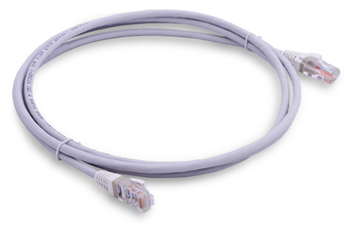
UTP
UTP cable is a transmission medium that consists of 4 pairs of wires. UTP cables are used in a variety of tissues. Each of the eight individual copper wires in UTP cable is covered by an insulating material. In addition, in each pair of wires that are wrapped around each other.
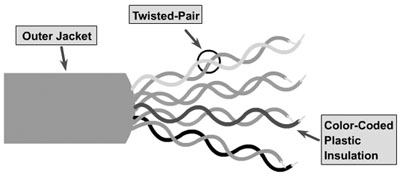
UTP cables are often combined with the use of Registered Jack 45 (RJ-45) connector. RJ-45 connector eight cable is typically used to connect a computer to a local-area network (LAN), especially Ethernet.
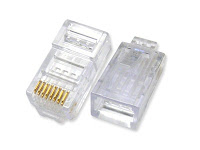
UTP cable has four pairs of copper wire with a size 22 or 24 gauge (gauge is the standard cable pengurkuran). One factor that distinguishes other UTP cable with one cable UTP cable has an impedance of 100 ohms.
although formerly UTP cable is said to have a slow transfer speed, but
in its development are now able to pass traffic up to 1 Gbps. Maximum UTP cable length is 100 meters.
STP
Almost the same with just any pair UTP wire wrapped with metal foil. These four pairs of comrades will be wrapped again with metal foil or metal fibers. The goal is around to reduce noise disturbances such as electric, magnetic fields, etc.. STP can be combined with STP Data Connector or it could be with RJ45. STP maximum cable length is 100 meters.
Because it is more resistant than noise, STP cable is more widely used
for outdoor applications, such as cable leading to the AP on the tower.
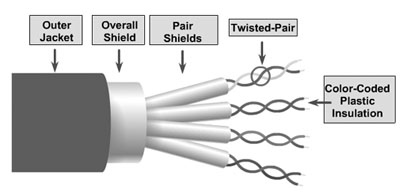
Standard Wiring
Each wire in the cable networks have different functions so that we can not crimping origin. There are two wiring standards most commonly used are: EIA / TIA 568A and EIA / TIA 568B, by way of cable sususan sort by color.
EIA / TIA 568A
The composition of the cable with a standard EIA / TIA 568A begins with green white cable. the cable arrangement would be as follows: 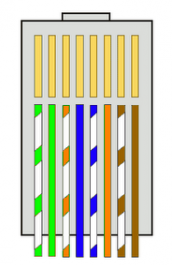

1. The White Green
2. Green
3. White Orange
4. Blue
5. White Blue
6. Orange
7. White Chocolate
8. Brown
2. Green
3. White Orange
4. Blue
5. White Blue
6. Orange
7. White Chocolate
8. Brown
EIA / TIA 568B
The composition of the cable with a standard EIA / TIA 568B begins with orange and white colors. Complete sequence of the cable with the standard as follows: 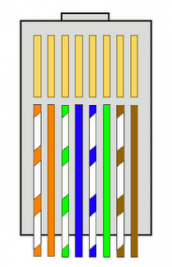

1. The White Orange
2. Orange
3. White Green
4. Blue
5. White Blue
6. Green
7. White Chocolate
8. Brown
2. Orange
3. White Green
4. Blue
5. White Blue
6. Green
7. White Chocolate
8. Brown
Cross Cable & Straight
By the time we talk about sorting pin cable network, of Crossover and Straight designations often we hear. Straight cable is a cable that ends with the beginning of the end of the end of the cable has the same pin order. Examples of straight cable with standard sequencing pin EIA / TIA 568B
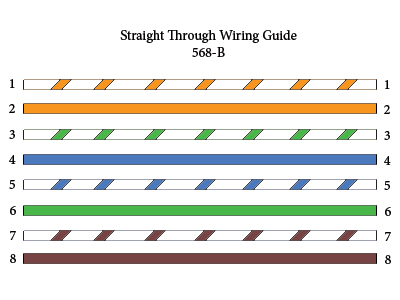
And then end with the back end of the same - the same pin arrangement EIA / TIA 568B. Then for a cross cable, as its name means opposite pin arrangement, or the opposite.
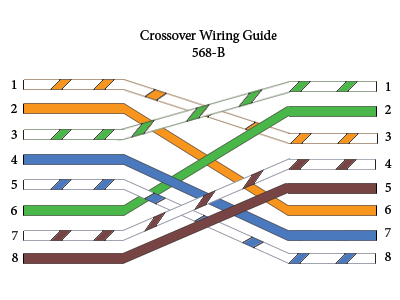
Straight and cross cable is the same - just connect the device to other
devices in a computer network, but a device that can be associated with
each - each of these different types of cables. Derikut table devices to be connected and cables needed:
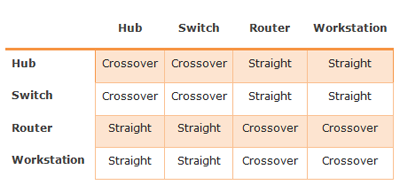
Auto MDI / MDI-X
The latest devices today typically supports Auto MDI / MDI-X. Devices that already support Auto MDI / MDI-X can be connected by a straight cable and cross cable.
The device will detect whether the connection requires a crossover, and
it will automatically use the MDI or MDIX configuration to match the
opponent's connection.
Wiring
Before doing the wiring, there are several considerations that must be
done first, such as how many computers will be connected. Then the distance between the nodes.
Equipment Needed
to do the wiring, prepare some of the following tools:
- Cable UTP / STP, specify how long the cable, and the amount of wiring required. Cable quality is also different in each brand.
- RJ45, which will be used as a cable connector.
- Crimping Tool, for installing konekstor RJ45 cable to UTP / STP, usually disebit crimping.
- LAN Tester, when the network cable manufacturing process has been completed, the last thing you need to do is testing. LAN tester is used to perform tsting on the cable network. Indication of whether the cable berfungdi normally be of indicators buyi LAN tester beeps or it could be from the LED lights.
Wiring Method
- Peel the end of the UTP cable, approximately 2 cm.
- Open the cable strands, straighten and urutankan compliant cables TIA / EIA 368B
- Once the order is according to the standard, cut and flatten the ends of the cable, input cable is straight and aligned into the RJ-45 connector, and make sure all cables are correct position.
- Perform using crimping tools crimping, press crimping tool and make sure all the pins (brass) on the RJ-45 connectors already "bite" of each cable. Once finished at the other end, do it again at the other end.
- The final step is check the cable pulled you created earlier by using the LAN tester, how to enter each end of the cable (RJ-45) masing2 to an available port on the LAN tester, make sure all the lights turn on and the LED lights up in accordance with the order of cable we make.
Make sure the end of the UTP cable that has an RJ-45 connector is
attached properly, the cable sheath (blue) also took a bit get into the
connector.
http://freakscontent.blogspot.com/
http://freakscontent.blogspot.com/
No comments:
Post a Comment